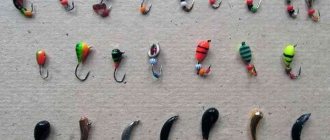Storing potatoes on the balcony in a box
How to insulate a potato box on the balcony?
This is the question gardeners ask themselves after the harvest has already been harvested. The question is quite reasonable, because now it is necessary to think about storing the crop in order to preserve it as long as possible in the winter.
It is best to store potatoes in the cellar, but if you live in an apartment, we will tell you how to store potatoes on a balcony or loggia in a box.
Before storing, all collected vegetables must be thoroughly washed and dried thoroughly in the shade or in a dark garage. While they are drying, we will make a box for vegetables on the balcony.
Regular box for potatoes and vegetables
1. First, decide on the required dimensions of the vegetable drawer. Its dimensions depend on the volume of the crop, the free space on the balcony and the size of the room itself.
2. To make a box for vegetables on the balcony with your own hands, you will need a 50 by 50 mm beam. First of all, make the frame of the box from the timber. Then cover it with plywood, fiberboard or OSB on both sides. You can lay polystyrene foam or polystyrene foam between the walls of the box, or you can take other material that you have on hand.
3. Place prepared vegetables and potatoes in a box. Cover the crop with several layers of thermal insulation - you can use the same penoplex (it is stronger than polystyrene foam and does not emit harmful substances), old blankets or jackets. You can also make a warm lid for the box by upholstering it with isolon.
How long does the effect last?
The operating time of a homemade cooling system depends on several factors:
- properties of the material from which the device is made;
- insulating characteristics of the bag;
- box volume;
- initial temperature of products;
- rationality of layout.
On average, the effect lasts 10-12 hours, provided that the entrance to the box is hermetically sealed. A large bag will require 2-3 batteries.
They need to be placed in this order:
- the first is laid on the bottom;
- the second is placed between the products in the center of the box or on top.
The more sources of cold contained inside, the longer the temperature acceptable for food is maintained.
A DIY cooler bag can be made within one hour or even a few minutes, if you have the necessary material on hand. In the process of gathering for an active pastime in nature, you can sew a useful item without delaying your friends and family. The thermobox will come in handy many times over when you have to go on a long journey.
Heated box for potatoes and vegetables
The best option for storage is to make a good glazing of the loggia and insulate it well. But if you haven’t done this yet, and you need to store vegetables somewhere, then you can make a box for potatoes on the heated balcony. For heating, you can use a low-power hair dryer or a 40-60 W incandescent lamp.
When using a hair dryer, air will be supplied to the box with vegetables through tubes, and the hair dryer will be turned on and off using a thermostat automatically, which will allow you to maintain the required temperature for storing potatoes on the loggia or balcony.
To assemble the structure you will need plywood, insulation from 50 mm, timber and plastic tubes of 40-50 mm in diameter, a hair dryer and an electric contact relay. It is better not to use mineral wool materials for insulation, since they will absorb moisture; it is better to use penoplex. The box assembly technology is as follows:
1. make the frame of the box from timber, fastening the beams at the corners;
Product made from karemat
People who often go on hikes know most about the karemat. The mat resembles a rug with good thermal insulation. It is used as bedding in a sleeping bag.
First you need to prepare a mixture consisting of water and ammonium nitrate. The latter can be taken with you on a hike in dry form. The cap of the bottle must be screwed on carefully.
The karemat will act as a heat insulator. It needs to be rolled into a pipe. You should put drinks and a cold accumulator inside. The holes in the pipe should be plugged with clothing (this will help maintain the temperature in the inside of the refrigerator).
Care when handling ammonium nitrate will help avoid fires and explosions. Contact with edible supplies can cause severe poisoning.
When using this method of creating a refrigerator, you must avoid contact with food. After preparing the solution, wash your hands thoroughly.
A picnic in nature is an event that will relieve work fatigue in adults. Children will have enough time to play in the fresh air and taste delicious supplies made by mom and dad. A refrigerator made with your own hands from available materials will fulfill its functions and save the family budget.
You can see how all the working aspects of making the refrigerator bag itself actually look in the attached video.
Cold accumulators are a necessary item for a refrigerator bag. What does a regular diaper have to do with it? All answers are in the video tutorial.
A polystyrene box is useful anywhere. How to make it - you can see everything with your own eyes.
Other ways to store potatoes on the balcony
1. Box with sawdust. Potatoes can be stored on the balcony in wooden barrels or boxes, which need to be placed like a “matryoshka doll”. Fill the resulting space between the boxes with sawdust.
2. Old refrigerator. Many people store potatoes on the loggia this way. The main thing is not to forget to regularly sort through the vegetables, otherwise one rotten potato will infect all the other tubers.
Another tip is to put a thermometer in a drawer or other place where vegetables are stored. In this case, you will be able to control the temperature, and if necessary (in severe frosts), you will be able to save the harvest by bringing vegetables into a warm room from the frost.
Types and sizes of incubators
What can you make this useful thing from at home?
- from foam plastic;
- from a cardboard box;
- made of plywood or wood;
- from an old refrigerator.
This list is not final. The specified list of different materials implies the manufacture of the cover and body from these materials. A detailed description, characteristics and design of each type of incubator can be found below.
The size of the incubator will depend primarily on:
- the number of eggs you will lay.
- from the location of the light bulbs that heat the incubator.
For reference: with an average incubator length of 450 - 470 mm and a width of 300 - 400 mm, egg capacity, pcs. (depending on size):
- chicken up to 70;
- duck or turkey up to 55;
- goose up to 40;
- quail up to 200.
Part
Make an incubator
- Take a Styrofoam container and cut a hole at one end.
This hole will contain a lamp for the incubator. Insert a connector from any lamp and a 25-watt light bulb there. Place duct tape around the opening inside and outside the container to reduce the risk of fire.You can use a small box instead, which will work, but the Styrofoam container itself is insulated and insulated, so it works better.
- Divide the container in two and place a chicken wire or other wire divider to block off the side of the container where the light bulb is placed.
If this is not done, the chickens may get burned.You can create an additional bottom by placing chicken wire (or other chicken wire) just above the bottom of the container. This will make it much easier to clean the container of food and feces.
- Now place a thermometer and a pressure gauge in the container to measure the humidity.
They need to be placed on the side of the container where the eggs will lie. The main function of the incubator is to maintain the optimal temperature and humidity for the eggs, so the thermometer and pressure gauge must be accurate. - Place a bowl of water in the container to maintain proper humidity.
Place a sponge nearby so you can control the humidity level and amount of water in the bowl. - Cut a small hole in the lid of the container through which you will observe what is happening inside the container.
Cover this hole with glass from a photo frame. Of course, the hole should be smaller in size than this glass. Secure the glass to the lid with tape.For convenience, you can make a handle for the container lid to make it easy to remove. The handle can be made from ordinary tape.
- Now is the time to test the incubator.
Before placing eggs in it, turn on the lamp and check the temperature and humidity throughout the day. If the temperature and humidity are higher or lower than normal, make some changes, position the lamp differently, pour more water into the bowl. The temperature should be around 37.5 degrees Celsius. The optimal humidity is 40-50% for the first 18 days and about 65-75% for the last four days.- To reduce the temperature slightly and cool the container, make small holes in the side walls of the container. Once the temperature drops to the optimal level, seal these holes with tape.
- To reduce humidity, pour some water out of the bowl or put a sponge in it.
- Now place some chicken eggs in the container.
The eggs must be fertilized (for this reason, store-bought eggs will not work for you). If you don't have laying hens or roosters, contact farmers or people you know who can give you some eggs. Place the eggs close together in the container.- The quality of eggs and the health of future chickens largely depends on where they come from. Therefore, before purchasing eggs, ask the farmer for permission to inspect the farm. Free-range chickens are generally much healthier than pen-fed chickens.
- The optimal hatching percentage is 50-85%.
- Laying hens are usually smaller in size and are bred specifically for their eggs. Chickens raised for meat are usually larger and grow quite quickly. There are chickens that are bred for both meat and eggs. Ask the farmer for details. they breed.
Video. How to make a potato storage box
Growing a potato crop is only half the battle. The main thing is to preserve it. If you live in a private house, then this task will be easily accomplished for you. The same cannot be said about those who have to create conditions for wintering vegetables in an apartment.
The potato box is ideal for storing tubers. In it you can create all the necessary conditions so that the potatoes do not spoil. You can make such a container yourself or buy it, and there are also requirements that must be observed when using it.
Making and installing a box with your own hands
The technology for assembling plastic and plasterboard boxes is the same, using the same tools and materials, with the exception of cladding panels.
Required tools and materials
The set of necessary tools should consist of:
- Construction level and square.
- Tape measures or folding meter.
- Marker.
- Screwdriver.
- Construction knife.
- Electric drill.
- A cutter for fastening metal profiles.
In addition to the covering material (plastic lining, plasterboard or wooden slats), you will need:
- Fasteners - dowels and screws.
- Luke.
- Metal profile or wooden beam for making a frame.
Drawings and diagrams
Box assembly work should always begin with design, namely:
- Decide on the installation location.
- Take measurements of communications.
- Mark the location of the hatch.
- Develop a diagram on paper, with the help of which it will be more convenient to calculate the amount of required material and fasteners. An example of a drawing of a vertical box in the photo below.
Work progress
After carrying out the calculations, you can mark the future structure on the walls and floor and proceed sequentially to the following types of work:
- Cutting profiles or wooden blocks of the required size.
- Installation of frame parts on walls using dowels for fastening. First of all, you need to secure the starting profile to the floor and the wall racks (if the box will be in contact with one side of the walls). Then two racks are installed in the front part at a distance of at least 3 cm from the pipe. Horizontal jumpers are attached perpendicular to them, connecting the vertical profiles into one structure.
- Sheathing of the frame. Parts of the required size are cut from a sheet of drywall or plastic panels and attached to the sheathing with self-tapping screws.
- Installation of the hatch. The hatch must be located in a place where there is a branching of pipes or taps and other pipeline fittings are installed.
- Finishing. Finishing work on a plasterboard structure should begin with the installation of perforated metal plates at the corners, protecting the edges of the slabs from damage. Then you should seal it with a special mesh (serpyanka) and putty the joints of the parts, the recesses where the screws enter the material and prime the entire surface of the box. The structure prepared in this way can be plastered and painted, tiled, wallpapered or decorated in any other way.
- Installation of baseboards. You can use a plinth to cover the joints between the box and the wall and floor.
What types of boxes are there?
Let's consider all types of boxes that are suitable for storing potatoes for a long time.
Plastic
Similar containers can be found in markets and vegetable warehouses. This is a container dotted with cutouts and holes for ventilation. It is recommended to store potatoes in plastic boxes in the basement or in the summer.
Wooden
They are considered the most practical and long-serving. The tree does not oxidize tubers, but such containers must be treated each time before new use. Potatoes can be stored in wooden containers at any time of the year.
Iron
Metal containers are used for storage in winter - they can easily be heated. Without it, potatoes will quickly freeze in winter, for example, if you store them on an unheated balcony or in a garage. This is also not a suitable option for summer, as it is problematic to provide ventilation.
From foam plastic
This material is used only as insulation. Styrofoam boxes are placed inside wooden ones to provide additional heating. Storing crops in them just like that is a dubious idea. This material is not suitable for storing anything.
Plywood
From thick plywood you can build durable boxes for wintering potatoes. This is one of the most common storage methods. Plywood is easy to equip so that its use is suitable for any time of year.
Other materials
Some also use cardboard, zinc, and chrome-plated boxes, but this is not common. Such material is not suitable for preserving crops.
Step-by-step manufacturing guide
Before you get started, prepare the bag or box that you will transform into a thermal refrigerator. It is better to take a light bag or box as a container: it will heat up less. Cut out parts from foam plastic of the required shape and size that will serve as a heat-retaining layer.
After cutting out the foam blanks, put them in a bag and fasten them together with double-sided tape. All parts must fit tightly together, otherwise heat will flow inside the mini-refrigerator. Before inserting the foam plates into the box, it is better to wrap them with tape, so the material will not crumble, and it will be easier to insert it into the bag.
Additionally, the foam cube can be wrapped with a thermo-reflective sheet, which will help keep the cold inside longer. In such a bag you can transport not only chilled food, but also warm ready-made dishes to preserve their freshness and appearance.
Advantages and disadvantages
Despite the versatility of this storage method, it has its advantages and disadvantages.
- If the box is properly equipped, suitable humidity will be maintained.
- Potatoes practically do not germinate.
- The liquid does not condense in the middle.
- Direct sunlight does not reach the crop.
- Suitable temperature is maintained.
- The tubers remain elastic and do not dry out.
- This is the most convenient storage option.
- The exterior can be finished to match the interior.
- Before storage, tuber crops need to be specially processed - dried and sorted.
- Ready-made boxes are quite expensive. But even if you want to make them yourself, you will have to spend money.
- In a small apartment they will take up a lot of space.
Refrigerator container made from technical buckets
Hello. Today I want to tell you how I made an isothermal container (thermos), in which it is convenient to store frozen foods when going “out into nature.” As I already mentioned in my previous publications, we often go into the forest with tents in a large group. Sometimes such trips last a week, or even longer. This raises a problem - since we travel mainly in the summer, we have to eat meat products, kebabs, etc. in the first day or two. Otherwise they will spoil. Car refrigerators, of course, solve the problem, but they have a number of significant disadvantages. Namely: low capacity and high power consumption. If you leave it on and turn off the engine, after a few hours you will no longer start the car due to a discharged battery. Factory-made, large-capacity insulated containers are quite expensive, so it’s easier to make a large thermos with your own hands using waste materials.
So, we will need: 1. Technical container (bucket) with a capacity of 30 liters. 2. A smaller bucket with a capacity of 20 liters. 3. Polyurethane foam. 4 Foam plastic 50 mm. 5. Polystyrene foam 30 mm. 6. Stretch film. 7. Silicone sealant. 8. Assembly adhesive (“Liquid nails”) 9. Foiled polyurethane foam. (Or other similar foil material). 10. Scotch tape.
For production, I used this technical bucket, with a capacity of 30 liters, made from food label glue.
ATTENTION:
This operation cannot be done at once!! Under the top layer, the foam will not harden without air access, but will simply flow down! Therefore, you will have to do this for several days, applying the foam in thin layers. And one more important point: during the first passes, use an extension nozzle on the gun (or a long hose if you are using household polyurethane foam rather than professional foam.) The foam supply nozzle must be at the very bottom, otherwise the foam, rapidly expanding, will hang between the walls , and you will get air cavities. This should not be allowed to happen because it will significantly reduce the efficiency of your insulated container.
After all the layers have been applied and the foam has hardened, we cut off the excess with a stationery knife and apply a layer of silicone sealant, completely hiding the mounting foam and leveling its surface:
This must be done for two reasons: the hardened polyurethane foam must be protected from moisture and a smooth “rubber-like” elastic surface must be created for the lid to fit tightly.
We also need to “insulate” the lid. To do this, I cut out a circle of foam plastic 30 millimeters thick, with a diameter equal to the diameter of a large bucket at the top. Since polystyrene foam is an easily destructible material, in order to increase the strength of the lid and also protect the foam from moisture, I tightly, stretching it tightly, wrapped the resulting circle with stretch film in several layers. And also, I glued a plastic circle on top with “extinguished” polyurethane foam (I cut it from the lid of an extra large bucket) and the lid of a small bucket with a cut edge at the bottom. This is the insert I got:
To protect from direct sunlight, I covered the bucket with foil polyurethane foam, 5 mm thick. I used assembly adhesive (“Liquid Nails”).
The outer top cover was also covered with the same material. But, as it turned out, when closing and opening, due to the curvature of the thin plastic of the lid, the polyurethane peels off very quickly. After which I decided to simply make a “cap” that would fit on top of the closed bucket. Yes, I haven’t done that yet!))))))
Selection rules
Depending on where the container will be located, you need to prepare the place. This is due to the fact that different locations have different conditions. If you skip this stage, you risk ruining the entire harvest. To prevent this, you need to follow special rules for choosing a box.
For the entrance
You need to keep in mind that the entrance is the place where the cool temperature remains all year round. It's colder there than in the house, but warmer than outside. Ideal conditions have already been created here for the tubers to last longer. Heating and cooling are not required, so in most cases the box in the entrance for potatoes does not need to be insulated.
For apartment
In a living room, the air condition is completely different - it is warmer. To preserve the crop in these conditions, you need to choose the darkest and most well-ventilated corner. Often this place is the location of the drawer in the kitchen under the sink.
If this is not possible, then you can use a special cabinet for storing vegetables, which is equipped with holes for ventilation. Place it in the corridor or pantry. A wooden tray, birch bark container or wicker basket is placed in such a cabinet.
For a balcony: how to insulate
This is a place where the temperature is often similar to the temperature outside, so you will need a wooden box with a warm layer. Wood shavings, sawdust or crushed foam can be used as insulation. It is also important that the potato box does not allow light to pass through, so that the potatoes will not turn green over time.
After placing the potatoes on top, you need to wrap them with something warm - old clothes or a blanket. You can also put straw on top. Read a special article about storing potatoes on the balcony.
For a basement or cellar
Store-bought plastic boxes are best suited for storage here. For ventilation, you need to make holes 4-6 cm in size in the bottom. For the cellar, storage in wooden boxes without a lid is also common. To do this, the tubers are buried to a depth of no more than 1.5 m.
How to make a cold accumulator
The finished bag itself does not produce cold. In this form it can be used in winter as a thermos. Food or drinks will remain warm at sub-zero temperatures. The cold inside the box is maintained provided that the battery is placed inside. You can buy it in a store or make it yourself.
Option 1: Ice cubes
Algorithm for manufacturing a cold accumulator:
- pour water into the molds and place in the freezer;
- after 1-2 hours, take out the ice cubes and fill them with a strong plastic bag;
- solder the outlet or tie it with a rope.
This device fits on the bottom of the bag. Afterwards the products are stored. It is important not to leave the battery outside the box so that the ice does not melt quickly.
Reference! To prolong the effect, it is recommended to freeze the saline solution instead of ordinary water. It is prepared from 1 liter of liquid and 6 tbsp. l. table salt.
A cold source based on ice cubes has a significant drawback. It consists in the gradual melting of the contents of the package under the influence of heat. Liquid may leak through the seams, causing food to become wet.
Option 2: gel
Gel batteries are considered more practical. They maintain the temperature in the box longer and do not leak. You can make such a device from a diaper. The sequence of the process is as follows:
- a new diaper is dipped into a container of water and allowed to be well absorbed into the filler;
- carefully cut the area with the swollen gel and transfer it to a plastic bag with a zipper;
- place in the freezer for 30-60 minutes.
The cold source is ready for use!
A similar mass can be obtained from gelatin or wallpaper glue. The powder is poured into a container and filled with cold water. During the infusion process, a substance with properties similar to the gel is formed. After packing in a bag and freezing, it is placed inside a thermal box. Before secondary use, the battery must be “charged” in the freezer.
You may be interested in: Features of a refrigerator bag
Preparing the site
The basement or cellar requires the most preparation. Before installing the boxes with the harvest, it is necessary to treat the area with a lime solution 2 times with an interval of one week. If the humidity in the room is high, cover the floor with sawdust, beams or floorboards.
The storage space on the balcony must be dry. It is advisable that it be hidden from the sun and moisture. The correct position would be to choose a position that would not interfere with your ability to move freely on the balcony, so that you do not accidentally topple the structure with drawers.
The kitchen area should be dark. It is also important that the air does not stagnate there and there is good ventilation.
DIY miniature craft
We measure and cut out two squares of different sizes from cardboard: the side length of one figure is 18 cm, the other is 17 cm. We draw two lines diagonally from one corner to the other, then bend the corner so that the vertex connects with the intersection of the lines. We continue to bend the same part - the bend will be on the diagonal. Now you need to align the resulting folds.
These manipulations must be performed in relation to each angle. There should be 3 folds on each side. Then we cut the sides along the fold so that we get the bottom of the box. We carefully fold the corners without cuts towards the center along the folds, and then wrap and fasten them.
We fold the smaller figure in the same way as the larger one. We get a lid that we decorate. The box is ready.
How to store potatoes in a box
It is possible to provide the best conditions for the harvest only if you use an integrated approach:
- Treat the box before placing potatoes in it - remove dirt and dry.
- Sort the harvest - throw away small, damaged, rotten potatoes, leaving only healthy ones.
- The optimal temperature is +2…+5 ° C. This guarantees that the potatoes will not sprout or freeze. This will also preserve the taste of the tubers.
- Humidity should be low. High temperatures will cause the tubers to begin to rot. There must be ventilation in the room and in the container, and the air must be dry.
- The container should not be exposed to sunlight. The sun is a destructive factor for tubers. They begin to sprout and eventually rot. Long-term exposure to ultraviolet radiation on potatoes can cause various diseases and the accumulation of poisonous solanine in the vegetable.
- The boxes must be ventilated. In an enclosed space, the production of carbon dioxide increases, which leads to rotting. The container must have slots.
- Containers are disinfected before loading vegetables again. Residues from the previous harvest can have a detrimental effect on the new one. It is unacceptable for mold to remain in the container. You can treat the boxes with a solution of potassium permanganate or bleach.
Penoplex box
We surprise a loved one with a gift using construction material - penoplex. We will make a beautiful heart-shaped box from it.
From thick paper we cut out the heart and sides - templates. Now we trace the stencils on sheets of building material with a pencil and carefully cut out the details with a stationery knife. It's time to glue the blanks together with liquid glue (for wallpaper). We put away our finished heart box for a couple of days until the glue dries completely, and then use it for its intended purpose.
Friends, there are other options for gift packaging on the Internet. Look for or invent a model for creativity yourself. The main thing is to involve children and husbands in this amazing process! Family creative activities bring the family very close. Family is the most precious thing in the life of all people!
How to insulate an existing box
Only a box made of wood can be insulated. It should be made of boards or plywood. The tools you need are a screwdriver and self-tapping screws.
- insulation materials: sawdust, polystyrene foam or wood shavings;
- pieces of fiberboard or chipboard according to the size of the frame.
- boards.
Manufacturing instructions:
- If the box is lined with plywood on both sides, then add insulation between them.
- Secure it on top with a sheet of plywood to size.
- If the container is made of boards, then build the same box, but smaller, and place it inside the larger one.
- Fill the space between the large and small boxes with insulation.
- Make a lid on top; if this is not possible, cover with warm clothes or a blanket. You can cover it with straw.
Which is better?
A plastic box is one of the most unfortunate designs used to hide hot pipes. To make plastic panels, manufacturers mainly use cheap types of plastic, so they warp when heated, turn yellow and lose their aesthetic appearance. Of all types of boxes, it is the most inexpensive, but it also doesn’t last long. More durable are decorative fences for risers and heating radiators made of metal - lattice or with frequent perforations. This material conducts heat well and effectively transfers it into the room, resists high temperatures and mechanical stress. Metal grilles can also be painted in any color and repainted when changing the interior.
Alternatives to the box
If for some reason the box is not suitable for wintering the crop, then there are options for replacement:
- carton boxes;
- special plastic containers with a lid;
- nets for storing vegetables;
- vacuum bags (suitable only for small quantities of potatoes).
Storing winter supplies of potatoes is a responsible job. It depends on you how well the harvest will be preserved. It is better to review all possible options and choose the right one. If you do not have experience in this matter, it is better to read articles on the Internet, write in a forum, or ask a more experienced farmer.
Boxes for storing potato tubers are one of the best options. It will not let you down if you choose the right type of container and observe the proper conditions.
If you find an error, please select a piece of text and press Ctrl+Enter.
Cooling element and bag
Often, a portable refrigerator not only has to be carried in a car, but also carried on the shoulder or in the hands; if you need to travel with such a load in public transport crowded with passengers, then a soft cooler bag would be a more preferable option. To do this, select a spacious bag made of polyester or durable canvas fabric.
For soft refrigerators, it is easier to replace foam walls with EPS sheets, and line the inner surface with isolon. In this case, the box of the refrigerator is glued together using durable construction tape to eliminate cold leaks through the foam joints; for a soft refrigerator, an outer cover with a foam cover with Velcro fastening is sewn from isolon. Even if you drop such a refrigerator, it will still remain intact and will serve for many years.
You will need several cold packs to get the job done. It is best to use ready-made industrial elements with a gel filler, but you can make your own. The bag is glued with polyurethane glue from several layers of polyethylene film and filled with a gel made from boiled salt water and a thickener. The bag is filled 60%, the air is removed, after which the filler hole is sealed with a hot iron. For a 10-liter thermal box you will need four half-liter bags, frozen in the freezer to minus 18-20 ° C.











